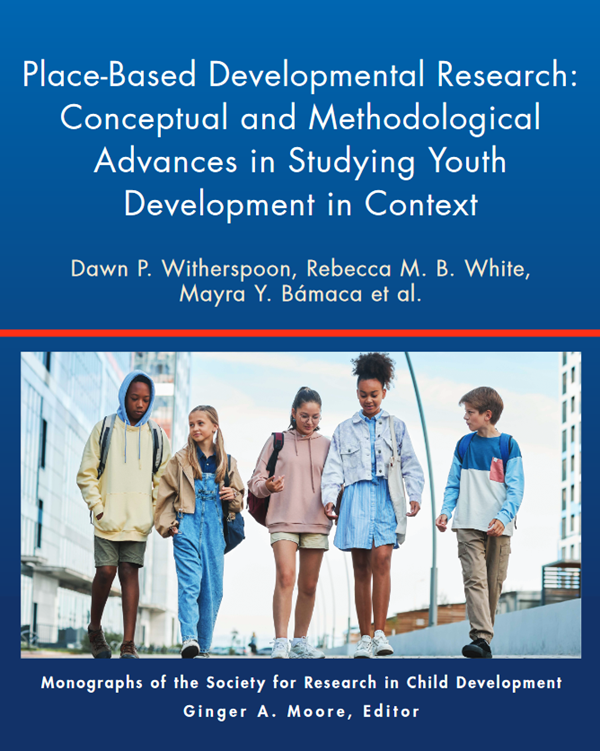The Development of Size Sequencing Skills: An Empirical and Computational Analysis.
IF 9.4
1区 心理学
Q1 PSYCHOLOGY, DEVELOPMENTAL
Monographs of the Society for Research in Child Development
Pub Date : 2019-12-01
DOI:10.1111/mono.12411
引用次数: 1
Abstract
We explore a long-observed phenomenon in children's cognitive development known as size seriation. It is not until children are around 7 years of age that they spontaneously use a strict ascending or descending order of magnitude to organize sets of objects differing in size. Incomplete and inaccurate ordering shown by younger children has been thought to be related to their incomplete grasp of the mathematical concept of a unit. Piaget first brought attention to children's difficulties in solving ordering and size-matching tests, but his tasks and explanations have been progressively neglected due to major theoretical shifts in scholarship on developmental cognition. A cogent alternative to his account has never emerged, leaving size seriation and related abilities as an unexplained case of discontinuity in mental growth. In this monograph, we use a new training methodology, together with computational modeling of the data to offer a new explanation of size seriation development and the emergence of related skills. We describe a connected set of touchscreen tasks that measure the abilities of 5- and 7-year-old children to (a) learn a linear size sequence of five or seven items and (b) identify unique (unit) values within those same sets, such as second biggest and middle-sized. Older children required little or no training to succeed in the sequencing tasks, whereas younger children evinced trial-and-error performance. Marked age differences were found on ordinal identification tasks using matching-to-sample and other methods. Confirming Piaget's findings, these tasks generated learning data with which to develop a computational model of the change. Using variables to represent working and long-term memory (WM and LTM), the computational model represents the information processing of the younger child in terms of a perception-action feedback loop, resulting in a heuristic for achieving a correct sequence. To explain why older children do not require training on the size task, it was hypothesized that an increase in WM to a certain threshold level provides the information-processing capacity to allow the participant to start to detect a minimum interval between each item in the selection. The probabilistic heuristic is thus thought to be replaced during a transitional stage by a serial algorithm that guarantees success. The minimum interval discovery has the effect of controlling search for the next item in a principled monotonic direction. Through a minor additional processing step, this algorithm permits relatively easy identification of ordinal values. The model was tested by simulating the perceptual learning and action selection processes thought to be taking place during trial-and-error sequencing. Error distributions were generated across each item in the sequence and these were found to correspond to the error patterns shown by 5-year-olds. The algorithm that is thought to emerge from successful learning was also tested. It simulated high levels of success on seriation and also on ordinal identification tasks, as shown by 7-year-olds. An unexpected finding from the empirical studies was that, unlike adults, the 7-year-old children showed marked difficulty when they had to compute ordinal size values in tasks that did not permit the use of the serial algorithm. For example, when required to learn a non-monotonic sequence where the ordinal values were in a fixed random order such as "second biggest, middle-sized, smallest, second smallest, biggest," each item has to be found without reference to the "smallest difference" rule used by the algorithm. The difficulty evinced by 7-year-olds was consistent with the idea that the information in LTM is integrally tied to the search procedure itself as a search-and-stop based on a cumulative tally, as distinct from being accessed from a more permanent and atemporal store of stand-alone ordinal values in LTM. The implications of this possible constraint in understanding are discussed in terms of further developmental changes. We conclude that the seriation behavior shown by children at around 7 years represents a qualitative shift in their understanding but not in the sense that Piaget first proposed. We see the emergent algorithm as an information-reducing device, representing a default strategy for how humans come to deal with potentially complex sets of relations. We argue this with regard to counting behaviors in children and also with regard to how linear monotonic devices for resolving certain logical tasks endure into adulthood. Insofar as the monograph reprises any aspect of the Piagetian account, it is in his highlighting of an important cognitive discontinuity in logicomathematical understanding at around the age of 7, and his quest for understanding the transactions with the physical world that lead to it.大小排序技能的发展:一个实证和计算分析。
我们探索了一种长期观察到的儿童认知发展现象,即尺寸序列化。直到7岁左右,孩子们才自发地使用严格的升序或降序来组织大小不同的物体。年龄较小的孩子表现出的不完整和不准确的排序被认为与他们对单元的数学概念的不完全掌握有关。皮亚杰首先引起了人们对儿童在解决排序和尺寸匹配测试方面的困难的关注,但由于发展认知学术的重大理论转变,他的任务和解释逐渐被忽视。他的叙述从未出现过一个令人信服的替代方案,将尺寸序列化和相关能力视为精神发育不连续的一个无法解释的案例。在这本专著中,我们使用了一种新的训练方法,以及数据的计算建模,为尺寸序列化的发展和相关技能的出现提供了新的解释。我们描述了一组连接的触摸屏任务,这些任务衡量5岁和7岁儿童的能力:(a)学习五到七个项目的线性大小序列,以及(b)识别这些相同集合中的唯一(单位)值,例如第二大和中等。年龄较大的孩子几乎不需要或根本不需要训练就能成功完成测序任务,而年龄较小的孩子表现出试错的表现。使用样本匹配和其他方法在顺序识别任务中发现了显著的年龄差异。这些任务产生了学习数据,用来开发变化的计算模型,证实了皮亚杰的发现。该计算模型使用变量来表示工作记忆和长期记忆(WM和LTM),根据感知-动作反馈回路来表示年幼儿童的信息处理,从而产生实现正确序列的启发式方法。为了解释为什么年龄较大的儿童不需要尺寸任务的训练,假设WM增加到某个阈值水平提供了信息处理能力,使参与者能够开始检测选择中每个项目之间的最小间隔。因此,概率启发式被认为在过渡阶段被保证成功的串行算法所取代。最小间隔发现具有在原则单调方向上控制对下一个项目的搜索的效果。通过一个小的附加处理步骤,该算法可以相对容易地识别序数值。该模型通过模拟被认为在试错排序过程中发生的感知学习和行动选择过程进行了测试。在序列中的每个项目上都生成了错误分布,发现这些分布与5岁儿童显示的错误模式相对应。被认为是从成功学习中产生的算法也进行了测试。它模拟了在序列化和顺序识别任务上的高水平成功,如7岁儿童所示。实证研究中的一个意外发现是,与成年人不同,7岁的儿童在不允许使用串行算法的任务中必须计算序数值时,表现出明显的困难。例如,当需要学习一个非单调序列时,其中序数值按固定的随机顺序排列,如“第二大、中等、最小、第二小、最大”,必须在不参考算法使用的“最小差”规则的情况下找到每个项。7岁儿童表现出的困难与LTM中的信息作为基于累积计数的搜索和停止与搜索过程本身紧密相连的观点一致,这与从LTM中更永久和更临时的独立序数存储中访问不同。从进一步的发展变化的角度讨论了这种可能的理解限制的含义。我们得出的结论是,儿童在7岁左右表现出的系列化行为代表了他们理解的质的转变,但不是皮亚杰最初提出的意义。我们将紧急算法视为一种信息减少设备,代表了人类如何处理潜在复杂关系的默认策略。我们就儿童的计数行为以及解决某些逻辑任务的线性单调设备如何持续到成年提出了这一点。就这本专著重复皮亚盖蒂描述的任何方面而言,这是因为他在7岁左右强调了逻辑数学理解中的一个重要的认知不连续性,以及他对理解与物理世界的交易的追求。
本文章由计算机程序翻译,如有差异,请以英文原文为准。
求助全文
约1分钟内获得全文
求助全文
来源期刊

Monographs of the Society for Research in Child Development
PSYCHOLOGY, DEVELOPMENTAL-
CiteScore
16.30
自引率
0.00%
发文量
0
期刊介绍:
Since 1935, Monographs of the Society for Research in Child Development has been a platform for presenting in-depth research studies and significant findings in child development and related disciplines. Each issue features a single study or a collection of papers on a unified theme, often complemented by commentary and discussion. In alignment with all Society for Research in Child Development (SRCD) publications, the Monographs facilitate the exchange of data, techniques, research methods, and conclusions among development specialists across diverse disciplines. Subscribing to the Monographs series also includes a full subscription (6 issues) to Child Development, the flagship journal of the SRCD, and Child Development Perspectives, the newest journal from the SRCD.
 求助内容:
求助内容: 应助结果提醒方式:
应助结果提醒方式:


